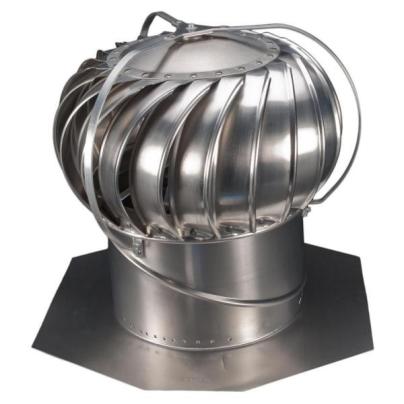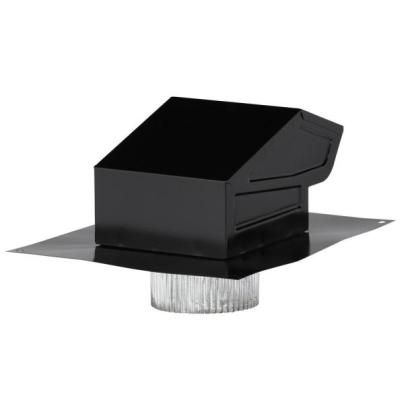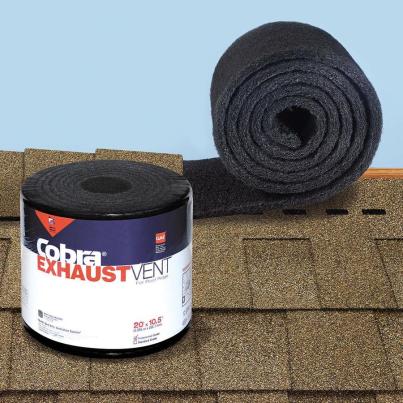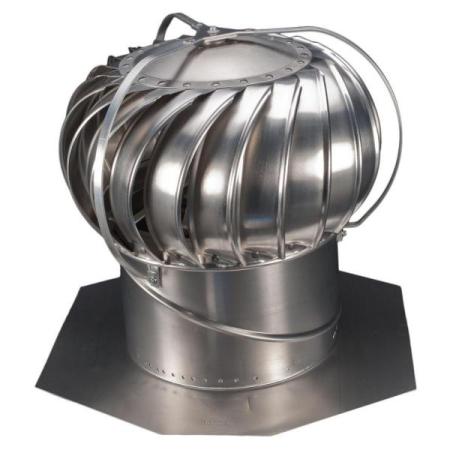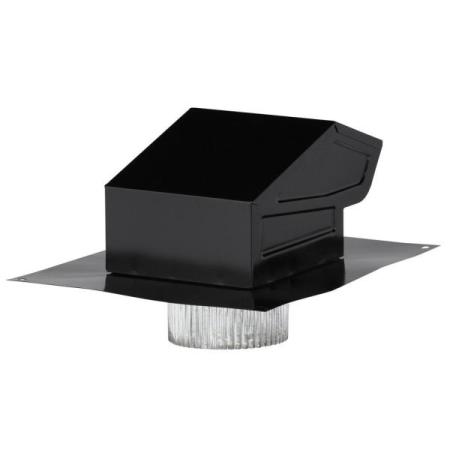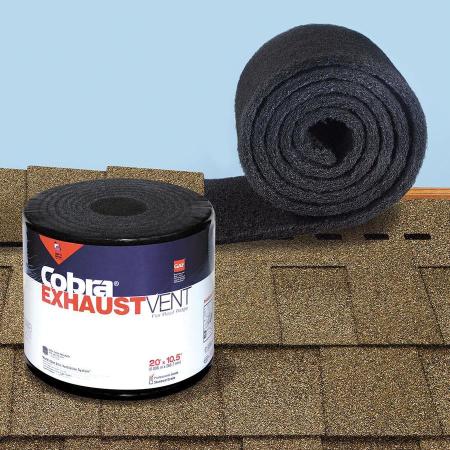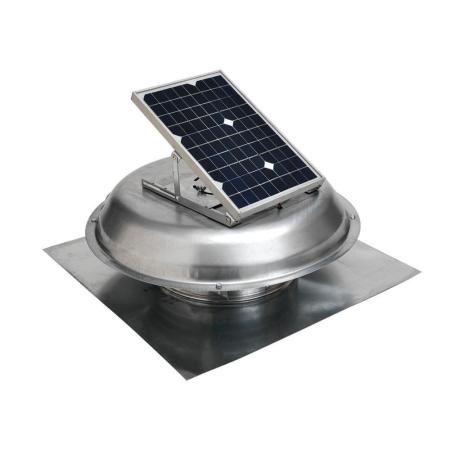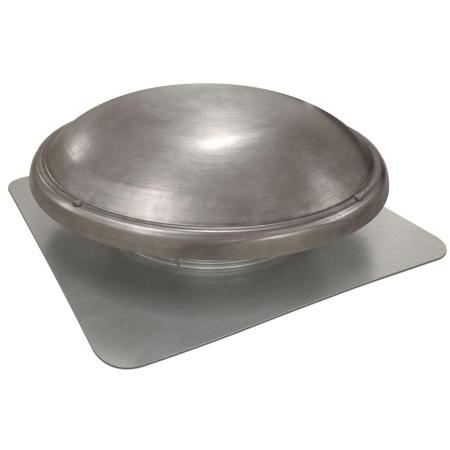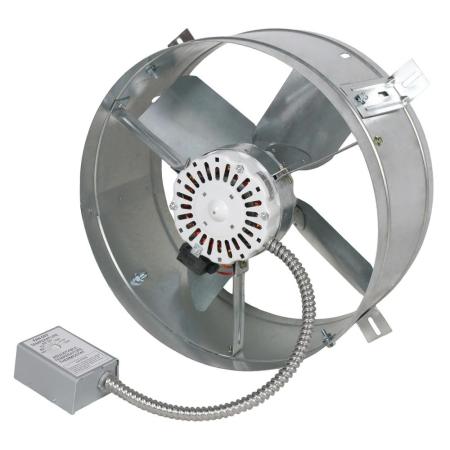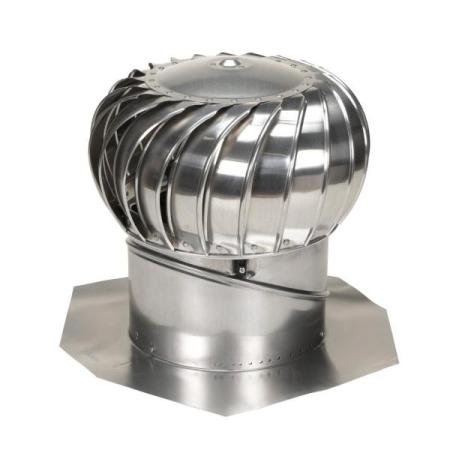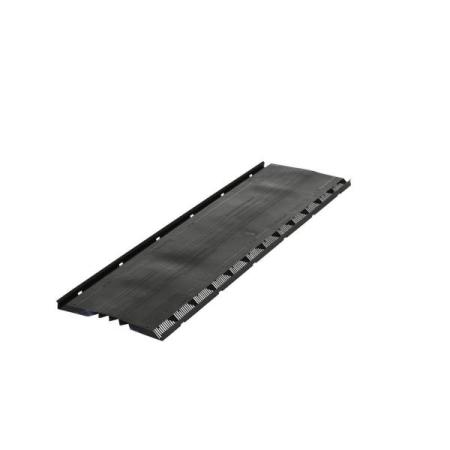We may earn revenue from the products available on this page and participate in affiliate programs. Learn More ›

Mold and mildew growing and shingles peeling away from the roof: These issues are caused by a poorly ventilated attic. Without a roof vent, attics can reach upward of 130 degrees Fahrenheit, which creates a breeding ground for mold and mildew. Moreover, the shingles could even peel away from the roof.
A roof vent solves these issues by creating a place for hot and humid air to escape. Roof vents come in many shapes and sizes. Electric, solar, and wind-powered vents use powerful fans and turbines that push warm air out of the attic space while pulling in cooler air through vents around the roof’s soffits. Static roof vents allow air to escape via vents that run along the entire roof peak or from small vent boxes.
To bring down the temperature in your attic, keep reading to learn about the different types of roof vents and the features you should consider when shopping for the best roof vents that can stand the test of time.
- BEST OVERALL: LOMANCO 12 in. Aluminum Whirlybird Wind Turbine
- BEST BANG FOR THE BUCK: Broan-NuTone 3 in. to 4 in. Roof Vent Kit
- BEST RIDGE VENT: GAF Cobra Ridge Vent
- BEST SOLAR VENT: Master Flow 500 CFM Solar Powered Roof Mount Exhaust
- BEST HARD-WIRED POWERED: Master Flow 1000 CFM Mill Power Roof Mount Attic Fan
- BEST FOR GABLE ROOF: Ventamatic 1600 CFM Mill Electric Powered Gable Fan
- BEST FOR LOW-SLOPE ROOF: Air Vent 12-in Aluminum Turbine Vent
- BEST FOR HIP ROOF: Air Vent 14-in x 48-in Black Plastic Roof Ridge Vent
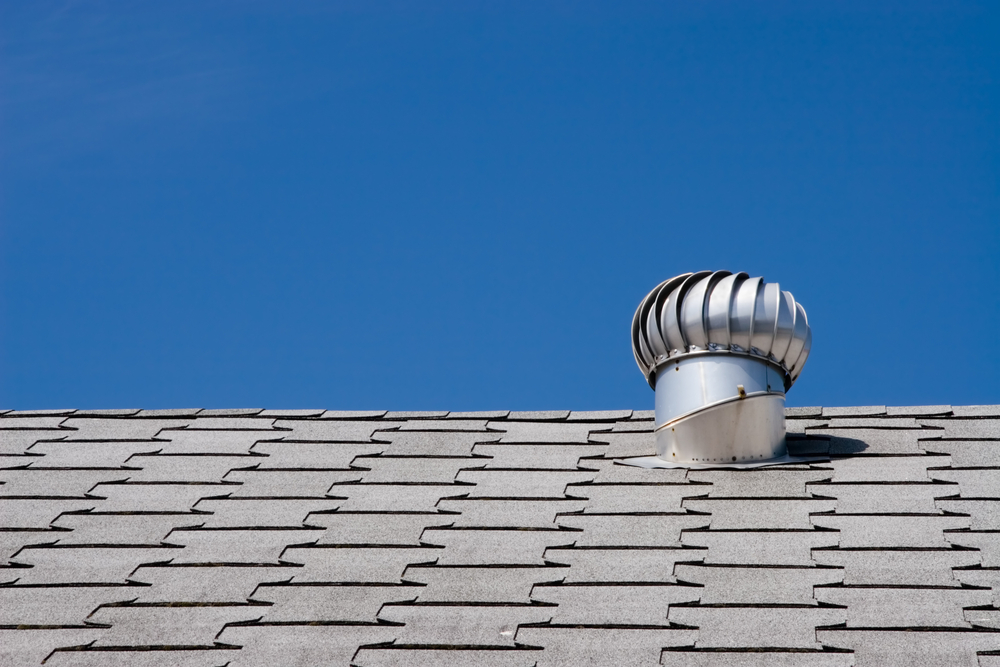
Types of Roof Vents
When determining the best roof vent for your home, you’ll find many types are available. They come in two main models: intake and exhaust, both of which are required to properly ventilate a roof.
Intake
Intake vents allow cool air to enter the attic and help push out the hot air, which freshens the space and decreases air temperature. You can place intake vents on the roof in one or more different areas.
- Soffit vents are holes in the panel under the house’s eaves that allow fresh air to enter the attic space. In older homes, these vents are similar in appearance to the heating and air conditioning registers inside the house. These vents are spaced around the home on the soffits to provide adequate ventilation. Newer homes typically have long, perforated vinyl soffits that allow for maximum ventilation. Many homeowners prefer soffit vents because they don’t detract from the appearance of the house.
- Drip edge vents are suitable for homes that lack the roof overhang required for a soffit vent. A drip edge vent attaches at the edge of the roof just under the small overhang of the shingles, creating a small vent gap that runs the length of the roof. Like soffit vents, they distribute air into the attic space.
- Over fascia vents are similar to drip edge vents. An over fascia vent sits on top of the fascia board that runs the length of a home just below the drip edge of the shingles. The roofing paper and shingles cover the vent, which makes it invisible, but it still prevents rainwater from entering the vent. An over fascia vent has long strips that run the length of the fascia board. The long gap allows for even air distribution into the attic.
Exhaust
Hot air in the home rises, eventually collecting in the attic. Exhaust vents allow the hot air to escape, preventing the buildup of heat. Unlike a dryer vent that vents through a wall, most exhaust vents exit through the roof.
- Ridge vents, a common feature in modern homes, consist of an aluminum cap that spans the peak of the roofline. The gap cap created on either side of the vent allows air to escape from the attic while keeping out rainwater. Once installed, a layer of shingles conceals the vent. Their length makes them more efficient than vents that cover one small area, while the design keeps them hidden, making them a popular option in newer homes. A ridge vent, a variation of a hip vent, is suitable for pyramid-shaped hip-style roofs.
- Wind turbines, also known as “whirlybirds,” are one of the oldest types of roof vents. A wind turbine consists of curved vanes configured in a circular shape. The vanes catch the wind, turning an internal turbine that pulls hot and humid air out of the attic. This type of vent is efficient, but wind speed must be at least 5 mph before it will operate. While this type of vent is easy to install and helps save energy, it’s quite conspicuous on the roof.
- Power vents, with their low-profile bowl shape and ability to function with or without wind, are often used to upgrade older wind turbines. Like wind turbines, they fit into a hole in the roof. This type of vent uses a powerful electric fan controlled by a thermostat. When the thermostat senses a buildup of heat and humidity, it turns on the fan and blows out the stale air through the vent. These vents are available in hard-wired models that tie into the home’s electrical grid and more efficient solar-powered models that function off an integrated solar panel. While the solar panel models are easy to install and help save power, hard-wired models are more powerful.
- Box vents mount like power vents and wind turbines. They use the natural power of the wind to remove heat and moisture from the attic. They work best in conjunction with soffit vents, which allow air to enter the attic space from under the eaves of the roof. The soffit draws in fresh air as the box vents allow hot air to escape. Box vents are low profile and require no power, making them an attractive option; however, multiple box vents are often required to sufficiently vent an attic.
- Gable vents are for attics with large gables. Instead of having to cut holes in the roof to vent the space, these louvered vents are built into the gables on the attic walls. When used in conjunction with a large gable fan, these vents maximize airflow through the attic.
What to Consider When Choosing the Best Roof Vent
Consider various factors when shopping for a roof vent, including the square footage the vent is rated to handle, the difficulty of installation, and the shape of the roof.
Roof Square Footage
The square footage of the attic space determines the amount of venting needed to adequately remove humid hot air from a room. The U.S. Federal Housing Authority recommends at least 1 square foot of attic ventilation for every 300 square feet of attic floor space, with half of the ventilation at the lower portion of the attic—intake vents—and half at the upper portion—outtake vents. This is commonly known as the “1/300 rule.”
Roof Features and Shape
The features and shape of the home or shed’s roof largely determine the type of vent suitable for ventilating the attic space. A home with large soffits that run the length of the roof is best served by a combination of soffit vents and ridge vents. A house with a hip roof and no soffits may require drip edge vents and hip vents or box vents, while gable vents are probably suitable for a home with large gables. Assess the roof style when determining the type of vents that will work with the house.
Material and Finish
Since vents must endure bad weather, they are made of durable galvanized aluminum or vinyl. They also come in various colors and finishes. Vents are not an attractive architectural feature on the home, so manufacturers try to hide them. Ridge vents are covered by shingles that match the rest of the roof. More conspicuous wind turbines, box vents, and electric fan vents come in different colors to blend with the roof shingles.
Environment
When determining which roof vent to use, consider the climate. While most vents can handle heavy rain and snow, hurricanes can wreak havoc on roof vents. Soffit vents and gable vents present opportunities for rain to be blown up and in to the attic. High winds can cause turbine vents to spin at speeds beyond their capacity, damaging them. Hurricane-force winds can peel ridge vents from the roof peak, exposing large gaps that rain can enter.
If you live in an area that often receives high winds or hurricanes, shop for roof vents designed to endure high winds. A low-profile box vent that’s not susceptible to high winds may make more sense than a wind turbine. Some ridge vents feature baffles that allow them to endure wind speeds of 110 mph or more.
Installation
Installation is another consideration when determining which vent to buy. Most external vents can be retrofitted onto an existing home. Box vent and wind turbine installation is a manageable job for most DIYers. Installing a ridge vent on an existing home can be a little more challenging because it involves removing the existing shingle caps and cutting a gap along the entire peak of the roof with a circular saw, which is a job best left to the pros, considering the danger of using power tools at a high elevation.
Intake vents, such as drip edge vents and fascia vents, are much more challenging to retrofit because of their location under the shingles along the lower lip of the roof. Installing these types of vents typically requires the removal of all of the shingles along the lower edge. Adding a drip edge vent or an over fascia vent is best completed during a new roof installation. Soffit vents can be added to a wood soffit fairly quickly by cutting holes in the soffit.
Our Top Picks
This list includes some of the top vents for cooling an attic space based on the type of roof. They feature durable construction that can withstand bad weather and efficient designs for handling large areas.
Best Overall
LOMANCO 12 in. Aluminum Whirlybird Wind Turbine
See ItOnce eschewed for the sleeker and more powerful electric fan vents, wind turbines have been making a comeback in recent years thanks to their green electricity-free design. The Whirlybird fan from Lomanco uses wind power to rotate its turbine to flush the attic of damaging heat and humidity. One unit can ventilate about 770 square feet of attic space.
The turbine’s 21 airfoils create enough surface area to rotate the turbine with a minimum 5 mph wind while also offering enough coverage to deflect rain from the hole. A pitch gauge included with the vent allows the turbine to easily set on the roof pitch, making installation relatively easy.
Best Bang For The Buck
Broan-NuTone 3 in. to 4 in. Roof Vent Kit
See ItEasy installation, an affordable price, and a design that doesn’t require wiring make this Broan-NuTone Roof Vent Kit a good option for improving attic ventilation. This kit includes a low-profile external vent that won’t turn the roof into an eyesore. A back-draft damper ensures that warm air exits and does not enter the roof space, while a screen prevents birds and other critters from breaching the home via the vent opening.
This model fits into a 5-inch diameter hole. Wide flashing on the sides of the vent allows it to attach to the roof securely while also allowing overlap with shingles to prevent water from leaking between the roof and the vent. A durable black powder coat finish prevents the vent from rusting.
Best Ridge Vent
GAF Cobra Ridge Vent
See ItWith easy installation and a low-profile design, the Cobra ridge vent from GAF is an option for adding ventilation to an attic space or shed. This vent comes in 48-inch-long sections that can be linked together to handle the square footage of virtually any attic. Three Cobra ridge vents are enough to cover a 1,600-square-foot attic when paired with the appropriate intake vents. At more than 13 inches wide, each strip adequately covers the roof’s peak, allowing for hot air to escape without allowing leaks.
This ridge cap works with standard 12-inch shingles. A tear-away design enables you to shorten the length of each ridge cap in 3-inch increments to prevent multiple climbs up and down a ladder to make cuts. With a durable design, this ridge cap can withstand winds up to 110 mph. Three-inch ring shank nails come with the kit for installation.
Best Solar Vent
Master Flow 500 CFM Solar Powered Roof Mount Exhaust
See ItNo required wiring and energy-saving solar power make this Solar Powered Roof Mount Exhaust Fan from Master Flow an excellent option for DIYers. It features a 15-watt fan with a brushless motor capable of producing airflow of up to 500 cubic feet per minute (CFM). The fan is rated to handle about 800 square feet of attic floor space.
The attached solar panel features swivel and tilt abilities up to 45 degrees to position it for optimal sun exposure. It works best with roof slopes ranging from 3:12 to 12:12 to allow for adequate drainage around the vent. An internal screen keeps small animals from entering the home through the vent. This model does not include a battery backup, so it runs only on solar power.
Best Hard-Wired Powered
Master Flow 1000 CFM Mill Power Roof Mount Attic Fan
See ItThis model from Master Flow blows a lot of hot air. This 1,000 CFM Galvanized Steel Electric Fan can pump out enough hot and humid air to keep attics of up to 1,600 square feet cool. It’s an electric vent; however, this fan keeps energy costs down via its thermostat, which turns on the fan only when the heat in the attic reaches a certain temperature. Sturdy galvanized steel construction ensures the fan will hold up to harsh weather.
A large flange provides coverage away from the hole opening, preventing leaks from forming around the unit, while an internal screen keeps out the critters. With four color options—silver, black, light brown, and dark brown—this roof vent complements various shingle styles.
Best For Gable Roof
Ventamatic 1600 CFM Mill Electric Powered Gable Fan
See ItThis beast, designed to fit over large gable vents, uses large 15-inch fan blades to produce a whopping 1,600 CFM. That’s enough air movement to ventilate gabled attics up to 2,400 square feet. The fan does not require a hole in the roof; instead, it attaches to the attic’s gabled end and blows air out through a louver vent.
An adjustable thermostat lets the homeowner set the fan to come on between a broad temperature range of 50 and 120 degrees, helping to keep down power costs. It features durable galvanized steel construction, and it must be hardwired into the home’s electrical grid.
Best For Low-Slope Roof
Air Vent 12-in Aluminum Turbine Vent
See ItA low-sloped roof on a home or large shed doesn’t provide much space for airflow. This turbine fan requires just 95 square inches of open space to promote adequate airflow for it to function. That’s a lot less than the 500 square inches or more of free space an electric fan requires to operate. While this fan may not move as much air, it can still provide adequate ventilation for an attic with up to 300 square feet of floor space. This model will work with roof slopes as low as 3/12. A large flange provides enough coverage around the turbine to prevent water from leaking into the attic.
The unit runs entirely off of outdoor air movement, making installation relatively easy. This sturdy fan features aluminum construction and four different color options, including white, tan, brown, and black, to match the home or shed’s shingles.
Best For Hip Roof
Air Vent 14-in x 48-in Black Plastic Roof Ridge Vent
See ItTake advantage of the multiple roof peaks created by a hip roof with a vent system that runs the length of those ridgelines. This ridge vent features air slots that allow warm air to escape the attic area. When combined with an air intake system, such as a drip edge vent, these ridge vents allow hot air to flow out. Running this system along the roof peaks can help provide maximum ventilation for the attic. An external baffle prevents air from flowing into the vent.
This vent features plastic ribbing that allows it to flex to fit roof pitches ranging from 3/12 to 16/12 without affecting its internal airflow. Its 14-inch width covers the vent with standard cap shingles that match the roof to create a finished look.
FAQs About Roof Vents
If you’re still wondering about the type of roof vent that’s best for your home, then read on for some of the most commonly asked questions about these vents.
Q. What happens if my roof doesn’t have proper venting?
A poorly ventilated roof can cause heat to build up to 150 degrees Fahrenheit or higher in hot weather, causing condensation to form, resulting in mold and mildew growth. This extreme heat also can cause the shingles to pull away from the roof, potentially leading to leaks.
Q. How do you calculate the amount of ventilation you need?
Calculate the amount of ventilation your attic needs by measuring its square footage. You need a vent that provides 1 square foot of ventilation for every 300 square feet of attic space. Check the vent’s square footage rating to determine how large or how many vents you need to adequately ventilate your attic.
Q. How many roof vents should you have?
Once you’ve calculated the amount of ventilation you need, you can determine how many vents it needs to meet that demand. If, for example, you’re using a box vent that can ventilate up to 300 square feet and you have a 1,200-square-foot attic, you need to install two vents to provide 600 square feet of ventilation along with large enough intake vents to handle the other 600 square feet.
Q. How do you install roof vents?
Begin by identifying the location in the attic to install the vent. Drill a hole through the roof, leaving the drill bit in the hole to make it easy to find when you head to the roof. Once on the roof, measure and draw the opening for the vent (the size is indicated in its instructions) using the hole you drilled as a guide. Use a reciprocating saw or jigsaw to cut through the shingles and roof sheathing. Loosen the shingles around the hole. Apply caulk around the vent’s flange. Install the vent by sliding the flange under the surrounding shingles on the top and sides, leaving the downward side over the shingles. Use the prescribed number of nails to attach the vent and secure any loose shingles.
Q. Can rain get in roof vents?
Roof vents are designed to prevent rain from directly entering the attic. High winds can drive rain upward through some vents, allowing water to enter the space.
